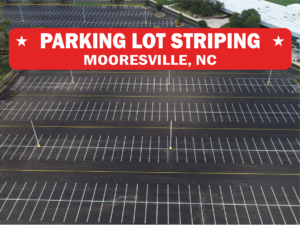Asphalt parking lots are a common feature in many commercial and residential areas. While they are durable and can withstand heavy traffic, over time, cracks may develop due to various factors such as weather conditions and wear and tear. Filling cracks in asphalt parking lots is essential to maintain the integrity and longevity of the parking lot. In this article, we will discuss the benefits of filling cracks in an asphalt parking lot and the procedures involved.
Benefits of Filling Cracks
1. Prevents Water Damage: Cracks in an asphalt parking lot can allow water to seep through, leading to further damage. When water penetrates the cracks and reaches the base layer, it can weaken the foundation and cause potholes. By filling the cracks, you create a barrier that prevents water from entering and causing additional harm.
2. Enhances Safety: Uneven surfaces and potholes in a parking lot can pose a safety hazard for pedestrians and vehicles. Filling cracks helps to maintain a smooth and even surface, reducing the risk of accidents and injuries. This is particularly important for high-traffic areas where the safety of customers, employees, and visitors is a top priority.
3. Extends Lifespan: Regular maintenance, including crack filling, can significantly extend the lifespan of an asphalt parking lot. By addressing cracks early on, you prevent them from spreading and developing into larger, more costly issues. Investing in routine crack filling can save you from the expense of complete resurfacing or reconstruction in the future.
4. Improves Aesthetics: Cracks in a parking lot can detract from the overall appearance of a property. Filling these cracks helps to improve the aesthetics of the parking lot, giving it a clean and well-maintained look. This can create a positive impression on visitors, customers, and tenants, enhancing the overall appeal of the property.
Procedures for Filling Cracks
1. Preparation: Before filling the cracks, it is important to prepare the area. Start by cleaning the cracks thoroughly to remove any debris, dirt, or vegetation. Use a wire brush or a high-pressure air blower to ensure the cracks are free from loose materials. This will help the crack filler adhere properly and ensure a more effective repair.
2. Choosing the Right Crack Filler: There are different types of crack fillers available, including cold pour asphalt emulsion, hot pour rubberized asphalt, and asphalt-based emulsion. The choice of filler depends on factors such as the size and severity of the cracks, weather conditions, and the expected traffic load. Consult with a professional or a reputable supplier to determine the most suitable crack filler for your specific needs.
3. Application: Once the cracks are prepared and the appropriate crack filler is selected, it’s time to apply the filler. Follow the manufacturer’s instructions for the specific product being used. Typically, it involves pouring the filler directly into the crack, slightly overfilling it to allow for settling. Use a squeegee or a trowel to spread the filler evenly and smooth out the surface. Allow the filler to cure as per the manufacturer’s recommendations.
4. Regular Maintenance: Filling cracks in an asphalt parking lot is not a one-time fix. Regular maintenance is essential to ensure the longevity of the repair. Inspect the parking lot periodically for new cracks or signs of deterioration. Promptly address any new cracks or issues that arise to prevent further damage. Additionally, consider sealcoating the parking lot every few years to provide an extra layer of protection against the elements.
5. Professional Assistance: While smaller cracks can be filled by property owners or maintenance staff, larger or more extensive cracks may require professional assistance. Consulting with an experienced asphalt contractor can help determine the best course of action for your specific situation. They have the expertise and equipment to handle larger repairs and ensure a long-lasting solution.
In conclusion, filling cracks in an asphalt parking lot offers numerous benefits, including preventing water damage, enhancing safety, extending the lifespan of the lot, and improving its overall appearance. By following the proper procedures, such as thorough preparation, choosing the right crack filler, and regular maintenance, you can effectively repair and maintain your asphalt parking lot, saving you time and money in the long run. When combined with asphalt sealing and line striping, you will have a pretty and protected parking lot for years to come.






